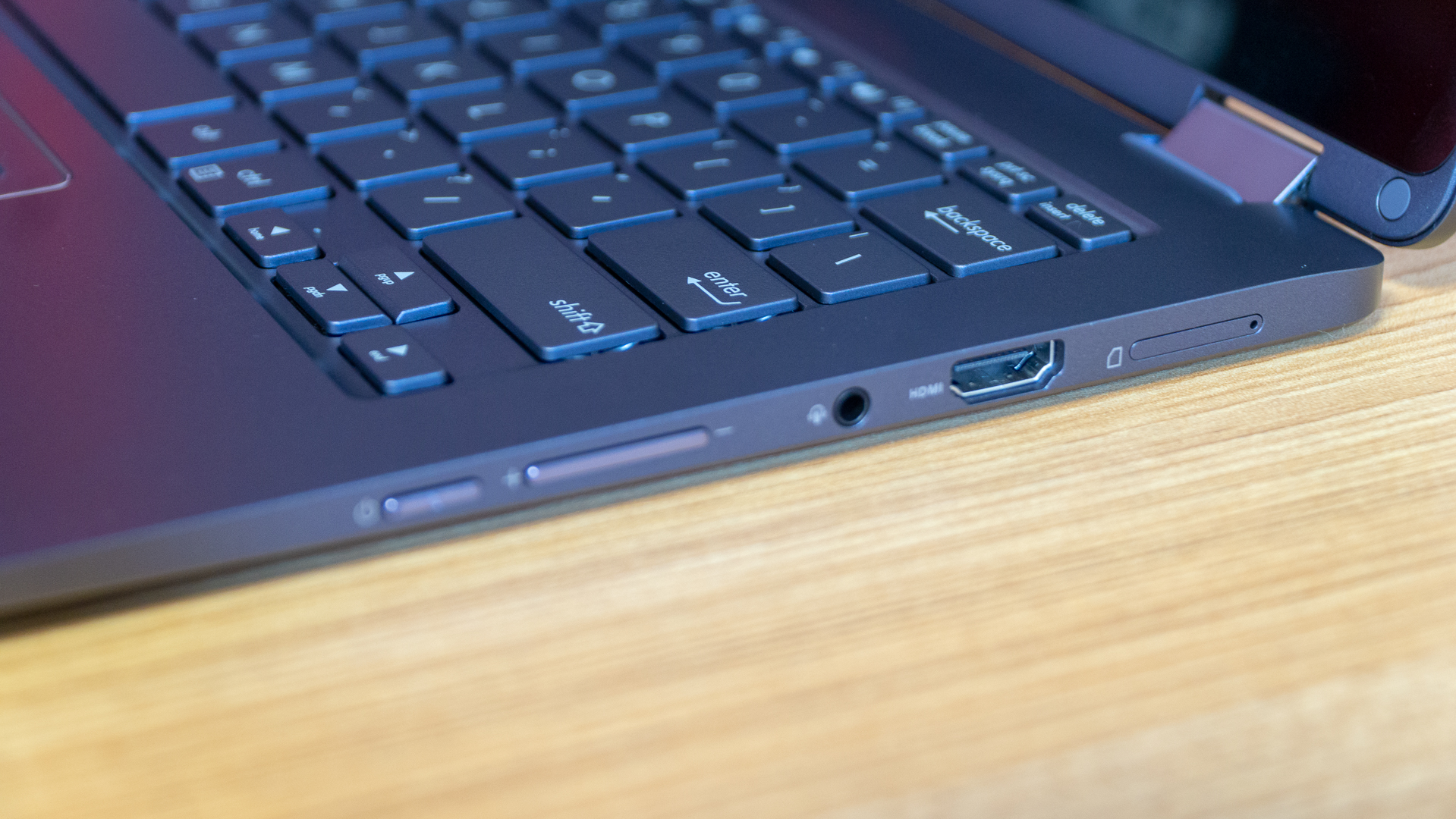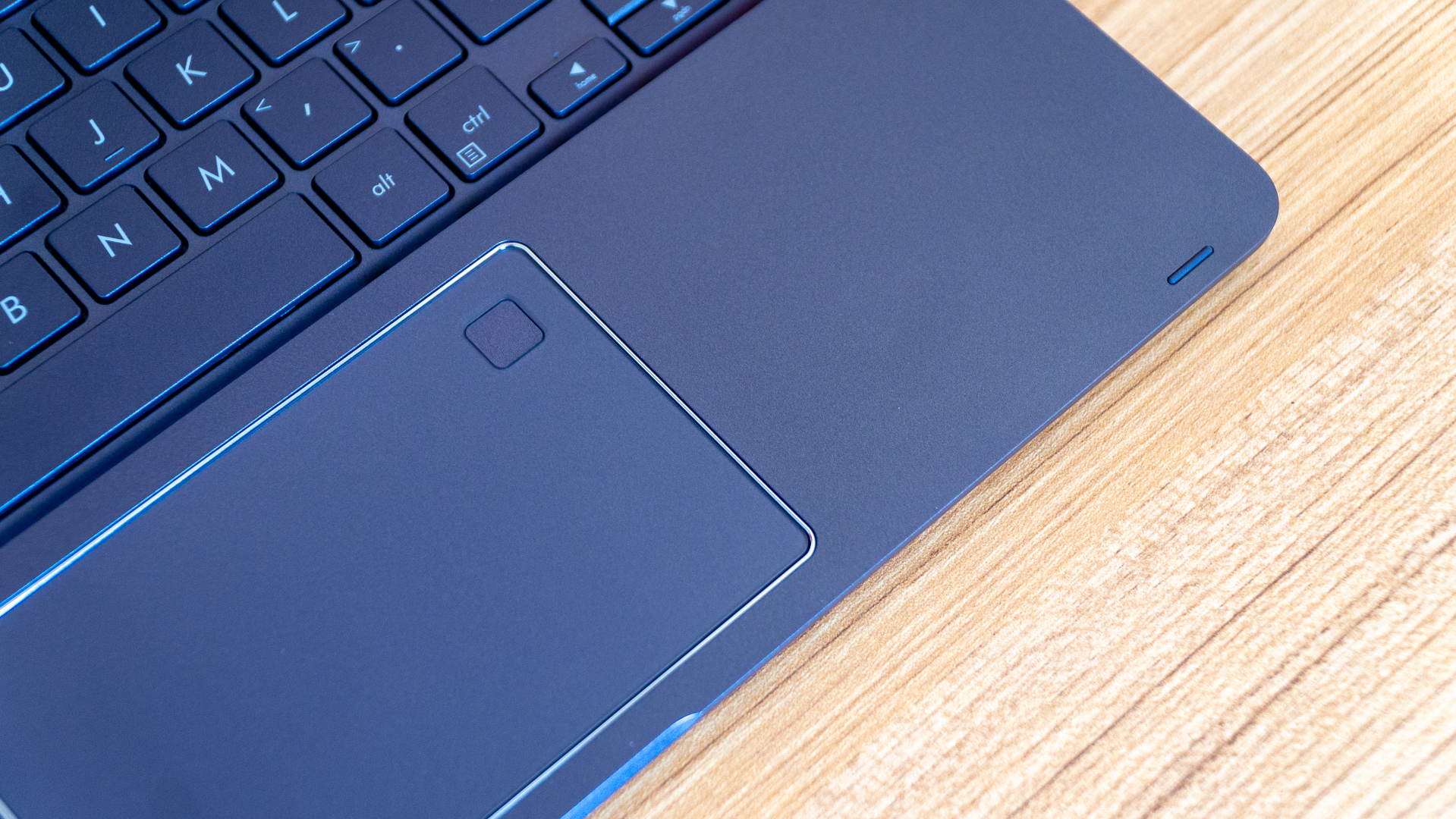TechRadar Verdict
The Asus NovaGo sits among the longest lasting laptops we’ve ever tested, which will be enough for some people to buy it. However, be warned, as super-long battery life is about the only major benefit to owning this laptop.
Pros
- +
Insane battery life
- +
Instant start
- +
Fingerprint sensor
Cons
- -
No keyboard backlight
- -
No USB-C
- -
Poor keyboard
- -
Middling performance
Why you can trust TechRadar
Asus NovaGo was the first among a scant few new laptops to launch with Qualcomm’s Snapdragon 835 processor inside, and the journey has been rather rocky. The laptop you see here is designed with a mobile-centric use case in mind, which it well achieves, but are the cuts made to get there too deep?
You see, the processor allows this laptop to last for up to 15 hours on a single charge, as well as instantly boot from a low-power state more similar to how a smartphone works rather than a laptop. However, with those capabilities come trade-offs, like limited performance and app compatibility.
The latter of which is due both to the laptop’s hardware and its software. Like all laptops with Snapdragon inside, the Asus NovaGo runs Windows 10 in S Mode out of the box, which blocks all apps not downloaded through the Microsoft Store. On top of that, these laptops cannot run apps developed using the x64, or 64-bit, instruction set, the most common way in which apps are created for Windows today, which leaves out a considerable amount of apps available on this laptop.
It’s sacrifices like these that should give you pause before considering this laptop. Then, there’s the lack of certain basic features, like a backlit keyboard and USB-C, that should make you seriously consider your options for a laptop at such a price as this.

Here is the Asus NovaGo configuration sent to TechRadar for review:
CPU: 2.6GHz Qualcomm Snapdragon 835 (octa-core; 8x Kryo 280 CPU)
Graphics: Qualcomm Adreno 540 GPU (710MHz)
RAM: 6GB LPDDR4 (1,866MHz)
Screen: 13.3-inch Full HD (1,920 x 1,080) LED (100% sRGB; wide-view)
Storage: 128GB SSD (UFS 2.0)
Ports: 2x USB 3.1 (Gen 1), 1x HDMI, 1x microSD card reader (up to 256GB), 1x combo Nano SIM slot, 1x audio jack
Connectivity: 802.11ac Wi-Fi (2x2 MIMO); Qualcomm Snapdragon X16 modem (Gigabit LTE; 4x4 MIMO); Bluetooth 4.1
Camera: HD webcam (720p)
Weight: 3.06 pounds (1.39kg)
Size: 12.44 x 8.7 x 0.59 inches (31.6 x 22.1 x 1.49cm; W x D x H)
Price and availability
While Asus claims to offer several configurations of the NovaGo in the US, the only one we’ve found (and the one we’ve reviewed here) goes for $699 (about £527, AU$936). That gets you the Qualcomm Snapdragon 835 processor inside, with 6GB of memory and 128GB of storage, driving a 13.3-inch Full HD (1,920 x 1,080) touchscreen.
Asus doesn’t seem to have fully launched the NovaGo In the UK or Australia, if at all, based on our research.
Because this product comes in at a rather awkward price, we’re stacking it up against the more budget-oriented Lenovo Flex 6 14 and the more luxury Samsung Notebook 7 Spin. The Flex 6 starts at $449 (about £333, AU$600) but offers up an Intel Core i5 processor, a larger 14-inch FHD screen, 8GB of memory and twice as much storage as the Asus for just another 30 bucks more than our NovaGo configuration in the US.
Meanwhile, the Notebook 7 Spin’s only $899 (about £679, AU$1,204) configuration likewise contains an Intel Core i5 processor powering a 13.3-inch FHD screen, 8GB of RAM and a 256GB SSD.
Both of these competing laptops have backlit keyboards, which the NovaGo oddly does not. However, the NovaGo matches them both in terms of biometric login via Windows Hello with a fingerprint sensor – and its battery life lasts far longer on a charge. Also, neither of these rival laptops offer LTE connectivity built right in.
Sadly, all of these details only serve to put Asus NovaGo in an even weirder position in regards to whether it’s worth the price of entry.












Design
The Asus NovaGo looks quite a lot like existing Asus laptops running Windows 10. Asus’s Star Grey color comes off as somewhere between cobalt blue and gunmetal gray, with its screen lid comprised of aluminum and its base of plastic.
Chrome accents line the edges of the laptop’s lid and trackpad, and its 360-degree hinges come in metal. Asus clearly aimed for this laptop to straddle the line between budget and luxury, but perhaps it should have just come down harder one way or the other.
While the NovaGo is as thin and light as competing flagship 2-in-1 laptops, it lacks basic features, namely that keyboard backlight and USB-C.
The former is the most egregious omission, especially considering how unimpressive the keyboard is on top of it. Not only can you not see this keyboard in the evening without a nightlight, but its travel is rather squishy and its feedback is weak.
At the very least, the trackpad is decent, with smooth tracking and a satisfying click. However, Asus had the bright idea of eating up some of that trackpad space with the fingerprint sensor. While it’s rather small, there are smarter places for these biometric login systems, like integrating it into the power button.
All told, the NovaGo looks like a premium laptop from a distance, but one that reveals some minor complaints upon closer inspection, which prove to be tough to ignore.

Display and audio
Asus has fitted the NovaGo with a 13.3-inch touchscreen with 1,920 x 1,080 pixels for a Full HD resolution at 165 pixels per inch (ppi). The display features a 100% sRGB rated color gamut, and it certainly shows.
Videos and stills pop off of the display, and deeper blues and blacks can get lost in the bezels. Speaking of which, Asus calls these out as particularly thin at 8.9mm, but we’ve certainly seen thinner out there.
The touch response on the display leaves something to be desired, however. Tracking with your finger on the screen’s surface isn’t quite that smooth, while the digital ink that’s created with your touch in certain app shows considerable lag. The line of ink quite literally follows behind your finger by about an inch if you move your finger quickly across the screen.
As for the laptop’s sound, we find the bottom-firing speakers to be loud and full, though they produce quite a bit of reverb – especially when on a surface. These speakers should get you by in the device’s various hybrid modes, but bring along headphones, too.
- 1
- 2
Current page: Introduction, price, design and display
Next Page Performance, battery life, features and verdictJoe Osborne is the Senior Technology Editor at Insider Inc. His role is to leads the technology coverage team for the Business Insider Shopping team, facilitating expert reviews, comprehensive buying guides, snap deals news and more. Previously, Joe was TechRadar's US computing editor, leading reviews of everything from gaming PCs to internal components and accessories. In his spare time, Joe is a renowned Dungeons and Dragons dungeon master – and arguably the nicest man in tech.
